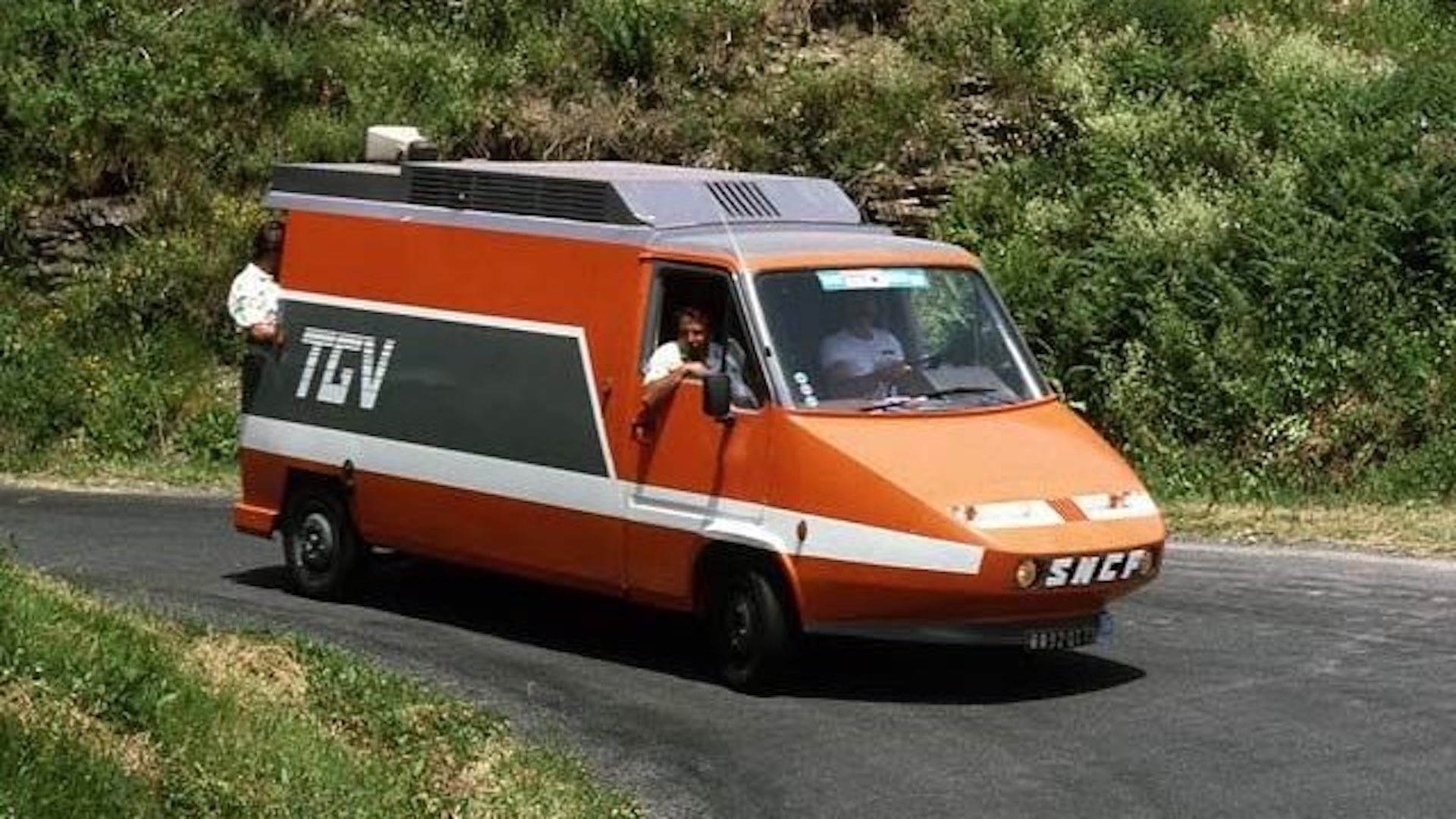

France’s TGV high-speed rail network is one of Europe’s best to this day. Entering service in 1981, the original Train à Grande Vitesse was so fast that it required the invention of wireless cab signaling, and it has an almost impeccable safety record. But convincing the public to ride it instead of flying took much slower vehicles: A series of Renault vans converted to look like locomotives and go the speed of a bicycle.
These train-nosed vans were commissioned by France’s national rail network, the SNCF, in 1981 according to Hungary’s Totalcar. They were meant to take part in the 1981 Tour de France caravan, basically a parade of sponsor vehicles that come through before the bikes (often tossing freebies as they go). With the first TGV line Sud-Est opening that fall, the SNCF tried to drive ridership by getting its new train in people’s faces. Or at least, something that looked like it.


The SNCF turned to Durisotti, one of France’s largest commercial vehicle upfitters, to convert a quartet of Renault Master vans into locomotive lookalikes. Say that five times fast. What spec of van used hasn’t been recorded, but they were standard ’80s Euro fare: front-wheel drive, with five-speed manual transmissions, and probably four-cylinder diesel engines. They had rear observation platforms like classic passenger trains, and even wore the real TGV Sud-Est’s livery.
The campaign was evidently as successful as the train line it promoted, and went on to visit other, less globally significant bicycle races. But the vans themselves weren’t much fun to operate, as one driver recalled on French train forum Trains du Midi.
“The first two years they were very difficult to use for two reasons: Firstly the braking system was not adapted to the requirements of the mountain stages,” wrote TGVan driver André Triana. “The second problem came from the installation of a generator, to power the sound system, in the interior part of the truck, making the air unbreathable for personnel located on the rear platform.”


It seems fans loved the vans though, because in 1988 the SNCF followed up with a second round of them. This time, they were modeled after the second-generation TGV Atlantique trainsets, and reflected their blue-gray liveries. Just two of these were built, and there aren’t as many period photos of them. However, they’re known to be laid out slightly differently, with their passenger-side wall folding down to expose what seemed to be a promotional booth at the time—or perhaps a concession stand.
Though it seems this was the last time the SNCF built a train van, the vehicles are widely adored, with numerous companies producing scale models of the modified Renaults. It’s unclear what fate most of the vans met (a Tumblr post says they were sold off), but it’s known at least one of the Atlantique vans still exist. CarJager notes one being listed for sale for €25,000 in 2016, and it may have fallen into the hands of a livery service that rents it out as a wedding vehicle.





I’m sure they’d do bachelor parties too, in case your fellow foamers want to run a train on the observation deck. What’d you think I was gonna say? I’ve met enough train enthusiasts to know the only trains they’re running are on rails.
Got a tip or question for the author? You can reach them here: james@thedrive.com